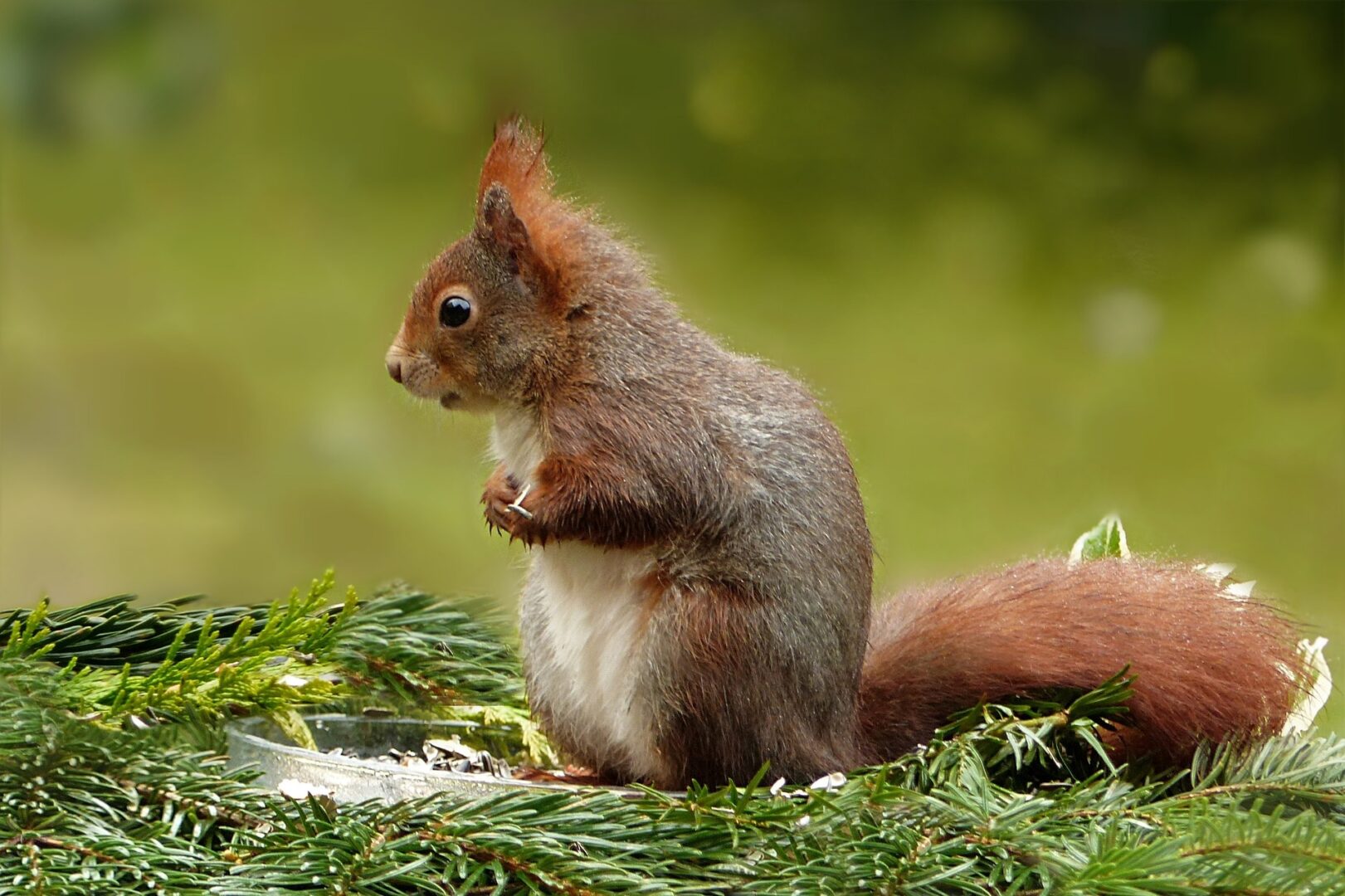Thursday, January 21st, is Squirrel Appreciation Day.
Some Interesting Facts
- The word ‘squirrel’ comes from the Anglo-Norman word “esquirel’ meaning ‘shadow-tailed.’ They are native to every continent with the exception of Antarctica and Australia. While there are squirrels in Australia, they were introduced there, but they are not native to the country.
- Their front teeth never stop growing. They grow up to six inches per year! That’s why they gnaw on everything!
- Squirrels are members of the rodent family but are closely related to chipmunks, groundhogs, and prairie dogs.
- Squirrels are known to pretend to bury nuts to confuse other squirrels or birds that may be watching. When the other animals come to investigate, the squirrel will run away to bury the goodies elsewhere.
- Squirrels are omnivores—meaning that, while they do eat mostly seeds, nuts, bulbs, fungi, and fruits, they will also eat insects, eggs, caterpillars, etc. Because they bury so many seeds and nuts and fail to come back for them, they are one of Mother Nature’s biggest helpers in dispersing plant material. By the way, they can find food buried beneath as much as a foot of snow!
- Squirrels are born in litters of two to eight. Babies are called “kits” or “kittens.” They’re about an inch long when born. They depend totally on their mother for two to three months before venturing out on their own.
- The smallest squirrel is the African Pygmy Squirrel, which is less than five inches long. The largest squirrel is the Indian Giant Squirrel, which can grow up to three feet in length. Our common gray squirrel grows 15 or 20 inches long with the tail adding another 6 to 9 inches.
- Some squirrels have been observed chewing on discarded rattlesnake skins, then licking their fur—thereby creating a rattlesnake “perfume” that throws off predators.
Living With Squirrels
While they can be a problem in the garden, they are easy enough to deal with. Any repellent (granular or liquid) that contains cayenne or capsaicin is very effective against squirrels. You can actually mix crushed red pepper flakes in your birdseed to repel them from bird feeders (the birds cannot taste the heat).
To keep them away from your green tomatoes
They tend to go after smaller green tomatoes because they are a size that is easy for them to handle. They are after the moisture content so they don’t usually eat the tomato. They take a bite or two then suck the juice out.
What can you do to encourage squirrels to get hydration elsewhere? Spray your tomato fruits with Hot Pepper Wax—a spray that contains capsaicin. Provide an easily accessible water source within 15 or 20 feet of your garden. If you spray the tomato but forget the water source, they may go after the moisture content in the tomato anyway if the weather is hot and dry.
To keep them from digging up bulbs
Plant tulip bulbs (their favorite) around 10 inches deep. Squirrels dig but do not tunnel. Plant deep and they’ll leave them alone. You can plant daffodils right on top of the tulips, at six inches deep. Daffodils are toxic, so squirrels won’t bother them.
If they come along behind you and dig up seedlings you just planted, keep in mind they’re digging because the soil is loose and easy to dig in. They’re not usually after the seedlings. Keep them from digging by generously sprinkling the soil with crushed red pepper flakes or cayenne pepper after planting those seedlings.
Want to keep squirrels out of your attic? Keep tree branches trimmed at least six to eight feet away from your house, so squirrels are less likely to chew through vents and make a home in your attic.
Embrace Your Inner Squirrel!
Finally, embrace the good work squirrels are doing. Once you learn to live with them, squirrels are fun to watch.
Speaking of fun to watch, you’ll want to keep squirrels out of your bird feeders so you can enjoy watching birds and the squirrels. Stop by the Great Big Greenhouse to get your squirrel resistant bird feeder and birdseed so you can prepare to welcome our feathered friends back to your yard in just a few more weeks.

